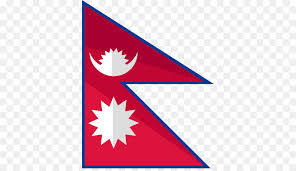Jodhpur, The Blue city with a sea of sapphire blue painted house. It is a second largest city of Rajasthan state. Jodhpur was founder by Rao Jodha, the chief of Rathore clan in 1459. Jodhpur area is also called Marwar and people from this region called Marwari. There are many things to experience the city . you can starts from the bustling and narrow market, see the spiritual pichwai paintings (pichwai paintings, made on cloth, depict tales from Lord Krishna’s life), Jodhpuri dress or breeches. Exquisite Bandhej (tie & dye) Sarees, most famous badla embroidered dresses for women.
- Mehrangarh Fort
Mehrangarh fort was built by Rao Jodha in 1459. This fort is situated 410 feet above the city on a hill. Mehrangarh fort is one of the largest fort in India. You can enjoy the splendid view of the blue city from the fort bastion. Fort is known for its exquisite lattice windows, carved panels, moti mahal, phool mahal, sheesh mahal, beautiful complex of the fort. Elephant’s howdah (Seat) gallery within the fort, which display different elephant howdah used by the royal family. There is also a silver howdah which was used by maharaja jaswant singh. There are seven gates that need to be crossed to reach at the fort. Fateh Pol (gate) was built by Maharaja Ajit Singh (1861-1901), the ruler of Marwar, to celebrate the defeat of the Mughals. The work done on the fort is so impressive, famous author, Rudyard Kipling of The Jungle Book fame, once referred to it as the work of giants
- Jaswant Thada
Jaswant thada is a cenotaph which was built by Maharaja Sardar Singh in 1899 in the memory of his father Maharaja Jaswant Singh II.Jaswant thada located left to the Mehrangarh Fort. This is a beautiful memorial made with white marble. Now Jaswant Thada changes as a museum and gallery of sorts, displaying memorabilia, including paintings and portraits of the rulers of Jodhpur, to the public.
- Ummaid Bhawan Palace
This Palace built by Maharaja Ummaid Singh, the ruler of Jodhpur in 1918-1947. It is a lovely blend of western and eastern architecture influence and built over chittar hills. This palace is surrounded by garden and have 350 rooms. Once a palace to residence for royal family now separated in three segments royal residence, Museum and a luxurious heritage hotel. It says that once famine occurred in Rajasthan. The palace was built at a slow pace since the objective was to provide employment to the famine-stricken people of Jodhpur. It provided work to around 3,000 people employed on the work site. Now one part museum is open for common people and it is fully dedicated with artifacts and heritage of Ummaid bhawan.
- Toorji Ka Jhalra (Step well)
Step well of Jodhpur also called Toor ji ka Jhalra was built in 1740 by Rani Tawar, consort of king Abhay Singh of Jodhpur. Jhallera water was mainly used by women because it was the job of women to fill and collect water. This step well has been immersed in deep water for decades. This step well is carved with red sand stone. It has fine breathtaking carvings of elephants dancing, medieval lions, and cows are main source of water.
- Ghanta Ghar Market visit
Ghantaghar also known as clock tower in Rajasthan. Its vibrant bazaars are lined with big and tiny shops where you can buy exquisite Rajasthani textiles, clay figurines, miniature camels and elephants, marble inlay work and classic silver jewellery. Nearby Mochi Bazaar is the best place for jutis, available in a host of colours and designs. if you are looking to make your parties fancier, head to Tripolia Bazaar for colourful, rich crockery in an array of designs and motifs.
- Mandore
The Mandore fort and garden was the place of the old capital before Jodhpur. Around 9 kms from the Jodhpur city. The place has gardens, old temple, cenotaphs of maharaja’s from 17th and 18th century. The most striking cenotaph by far is that of Maharaja Ajit Singh, the ruler of Marwar 1861-1901. When you are in mandore don’t forget to explore the temple, known as the temple of 330 million gods, with images of Hindu gods adorning the complex.
- Durry Udyog (handloom Durries)
A dhurrie is an Indian term for a handwoven rug or a thin flat carpet, an item of home furnishing. The Dhurries have unique designs inspired by the state of origin. Here are so many traditional handlooms available in nearby villages where you can visit and learn the process of making Durry (rugs). You can also personalize or ordered a durry by yourself while visiting them. People will host you with so much kindness.
- Bishnoi Village Safari
Bishnoi tribes of the village are staunch worshippers of nature in all its forms, especially the sanctity of plant and animal life. They even pray to the green trees and animals that inhabit their land, and are strict vegetarians. Apart from giving an insight into the lives of the tribal communities, the safari includes an expedition to Guda Bishnoi Lake, where one can find various species of exotic migratory birds and endangered species of animals, like blackbucks and chinkaras, for whom the lake is the primary water hole..










